2/18/2024 - More Fun In Puerto Vallarta! (Daily Diary)
Today we split up. Due to Mary's back, we changed our plans from a zip-line to a cooking class!
Puerto Vallarta is a resort town on Mexico's Pacific coast in Jalisco state. It is known for its beaches, water sports, and nightlife. The city's cobblestone center is home to the ornate Nuestra Señora de Guadalupe church, boutique shops, and various restaurants and bars. El Malecón is a beachside promenade with contemporary sculptures, bars, lounges, and nightclubs.
Today, we departed the ship at 10:00 am and headed for the area west of the city. We caught the bus on the pier and drove for about 40 minutes. We drove along Mazatlán's Malecón, one of the longest oceanfront boardwalks in the world, stretching over 21 kilometers. It is perfect for a leisurely walk or bike ride while enjoying breathtaking views of the Pacific Ocean. Our first stop was a cacao plantation. Mexico produces only about 1% of the world's cacao, but the government is attempting to increase that percentage.


Happy Anniversary #8 To Sarah and Jon.
Fly & Splash Eco Adventure (Jon and Sarah)
Overview: Get in on all the action at Cuale Mountain Nature Park, with daring mountain zip lining and nature paths, followed by a refreshing swim in an infinity pool accompanied by stunning views of the Sierra Madres.
Highlights:
- Feel the rush of adrenaline rush as you zip from mountain to mountain above the roaring Cuale River on an impressive circuit of eight zip lines.
- Discover the rich flora and fauna of scenic nature paths, including herons, blackbirds, tree squirrels, and more.
- Take a refreshing dip in a gorgeous infinity pool, admiring the picturesque background.
- At an additional cost, dine at Los Cuapinoles restaurant after your adventure.
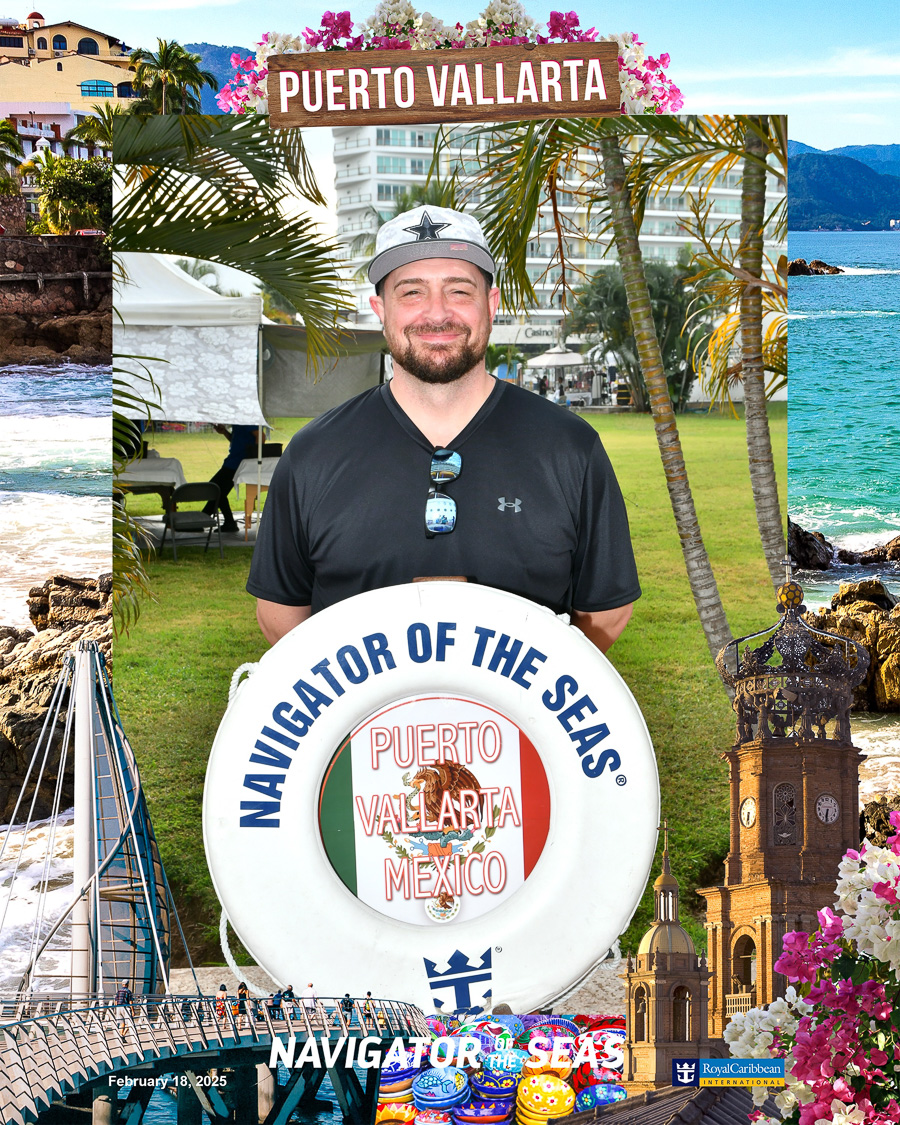
Back Country Cooking Tour (Paul & Mary)
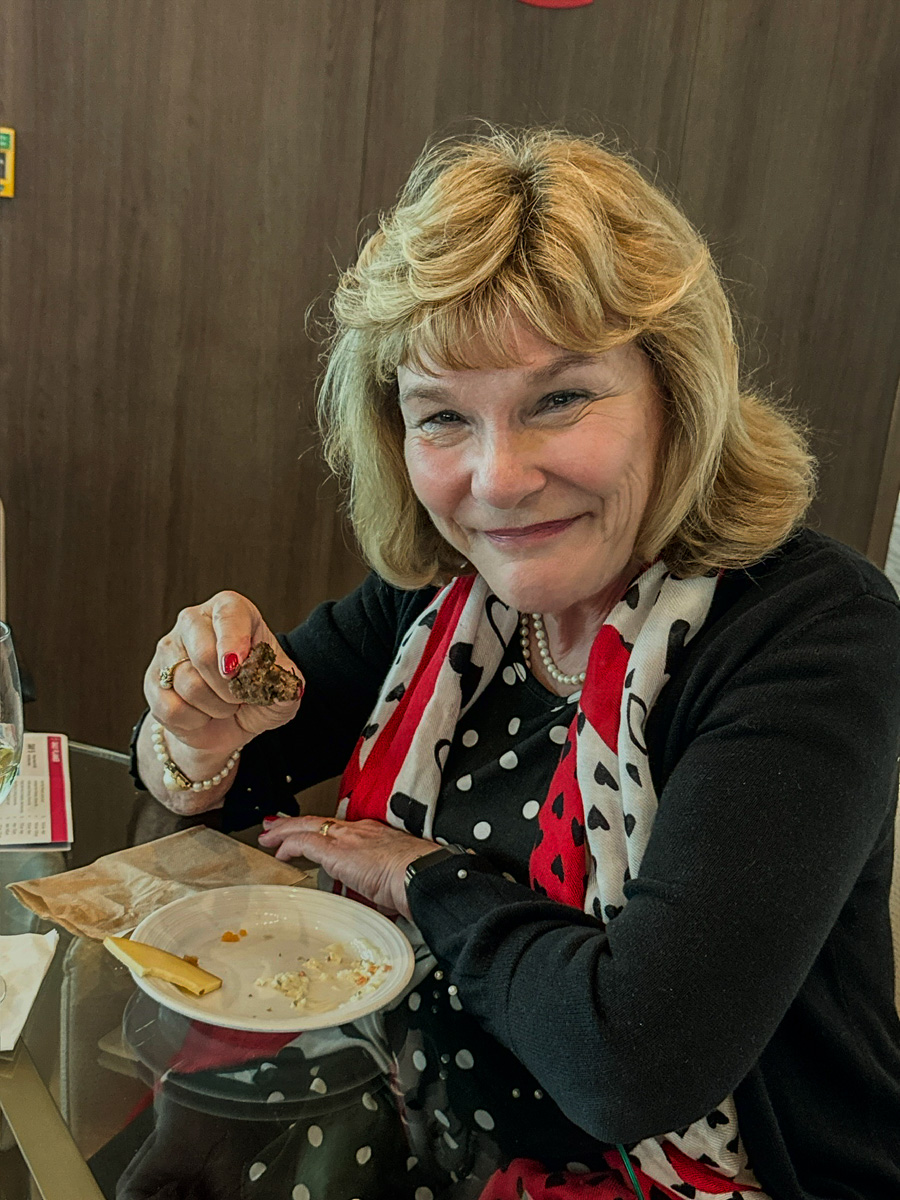
We had a quick snack before going on the tour!
Today, we departed the ship at 10:00 am and headed for the area west of the city. We caught the bus on the pier and drove for about 40 minutes.
We drove along Mazatlán's Malecón, one of the longest oceanfront boardwalks in the world, stretching over 21 kilometers. It is perfect for a leisurely walk or bike ride while enjoying breathtaking views of the Pacific Ocean.
Our first stop was a cacao plantation. Mexico produces only about 1% of the world's cacao, but the government is attempting to increase that percentage.

They were a team of tourism professionals who support the development of rural tourism and have valued cocoa cultivation as a cultural experience for locals and visitors.
From its origin to the present, cocoa is a valued food and a source of fascination throughout history. In our cocoa garden, the experience of getting to know it in its natural form, its ecosystem and the processes to transform it from seed to tablet is recreated.
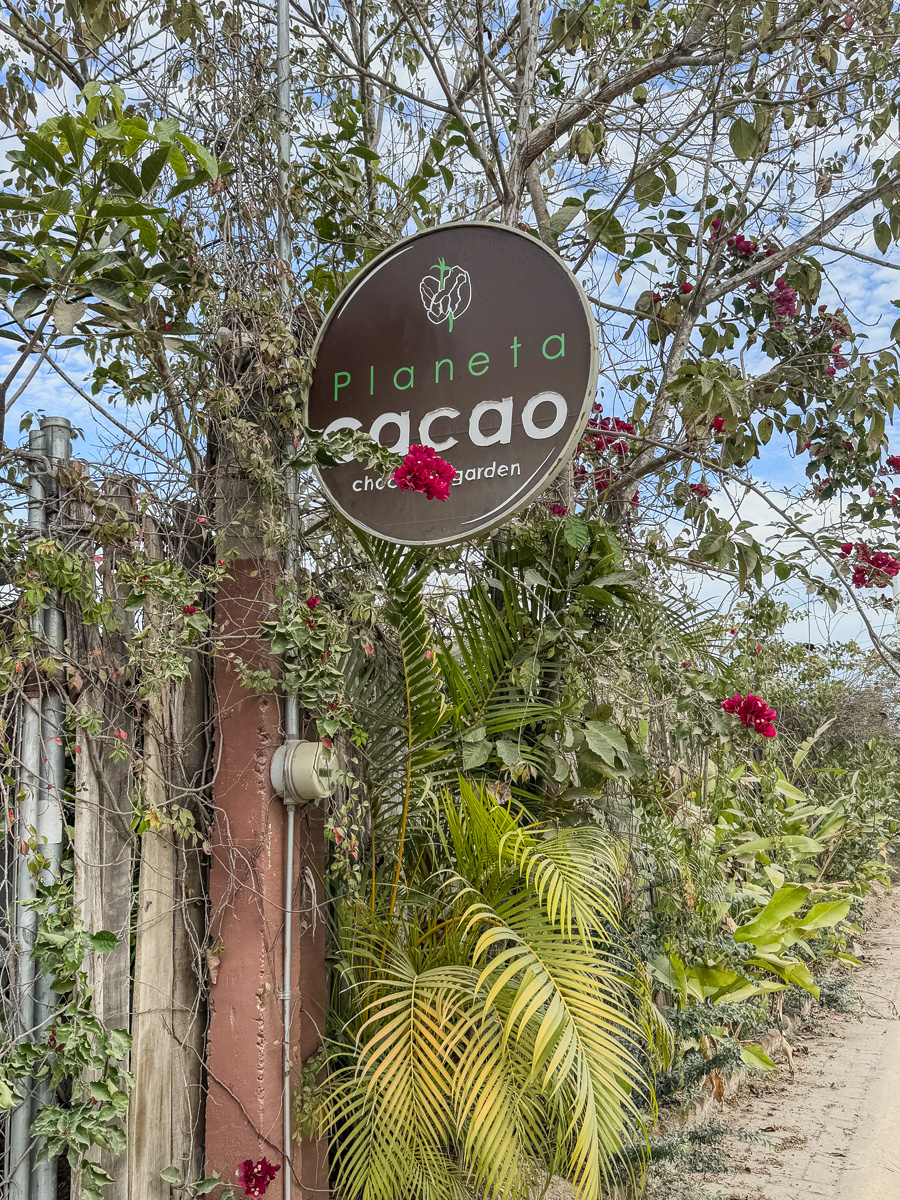
We walked across the dirt road into a small area dedicated to cacao (chocolate)
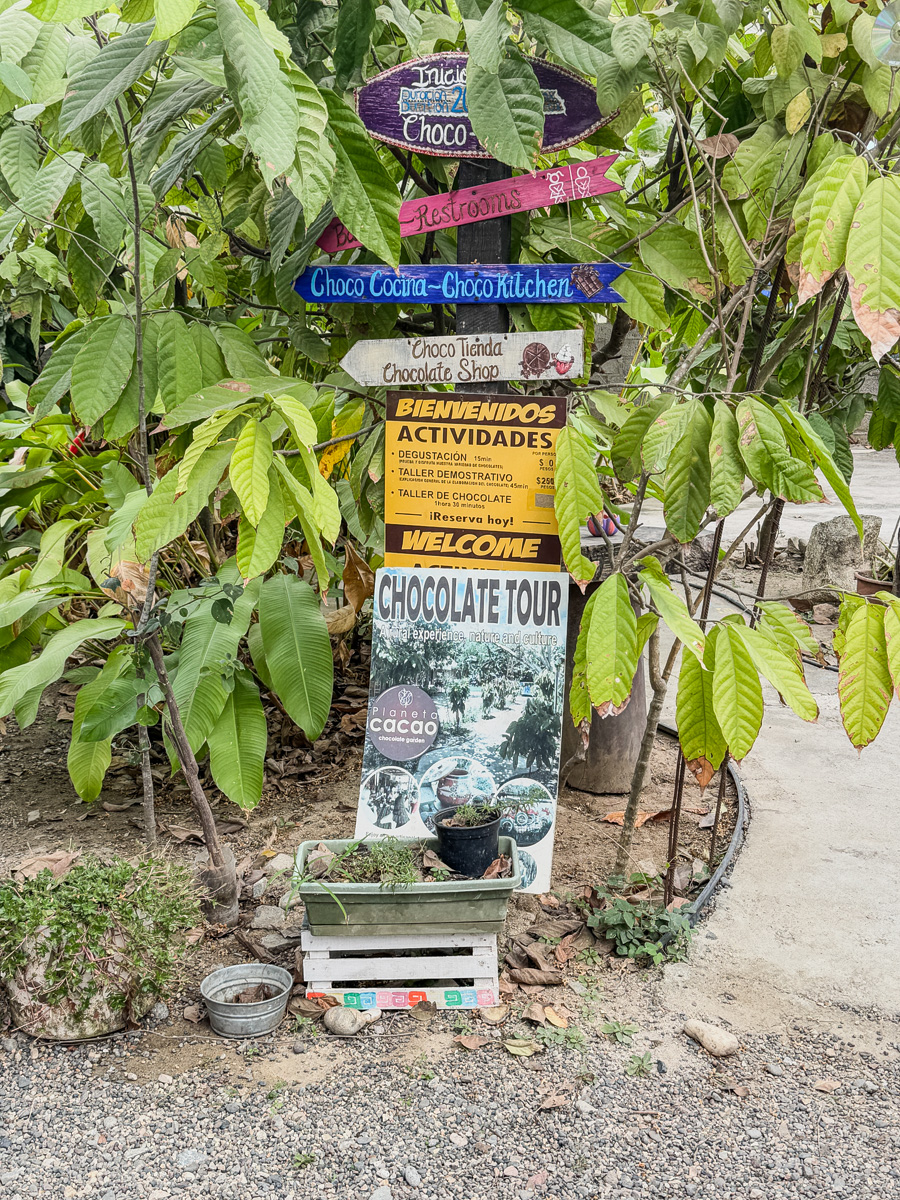
The signage was quite artistic!
The facility provided a detailed history beginning in 5000 BC with the Mayans. Cacao was brought to Europe in the mid-1750s, and they made terrific progress in using cacao. They did, unfortunately, begin to add processed sugar instead of raw sugar. We bought some 80% cacao bars.
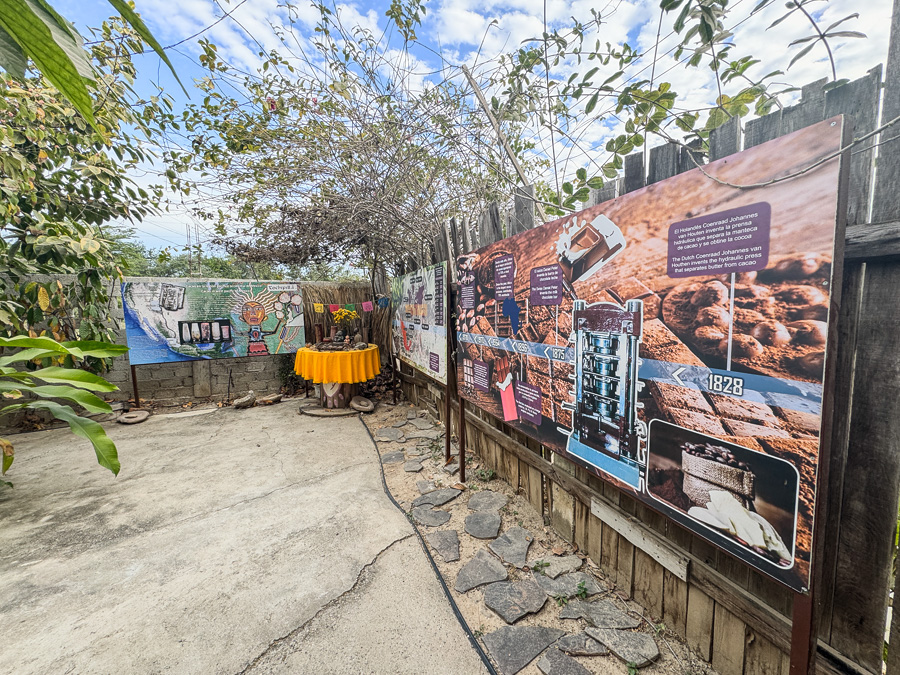
The walls told the story of cacao over the last two thousand years.
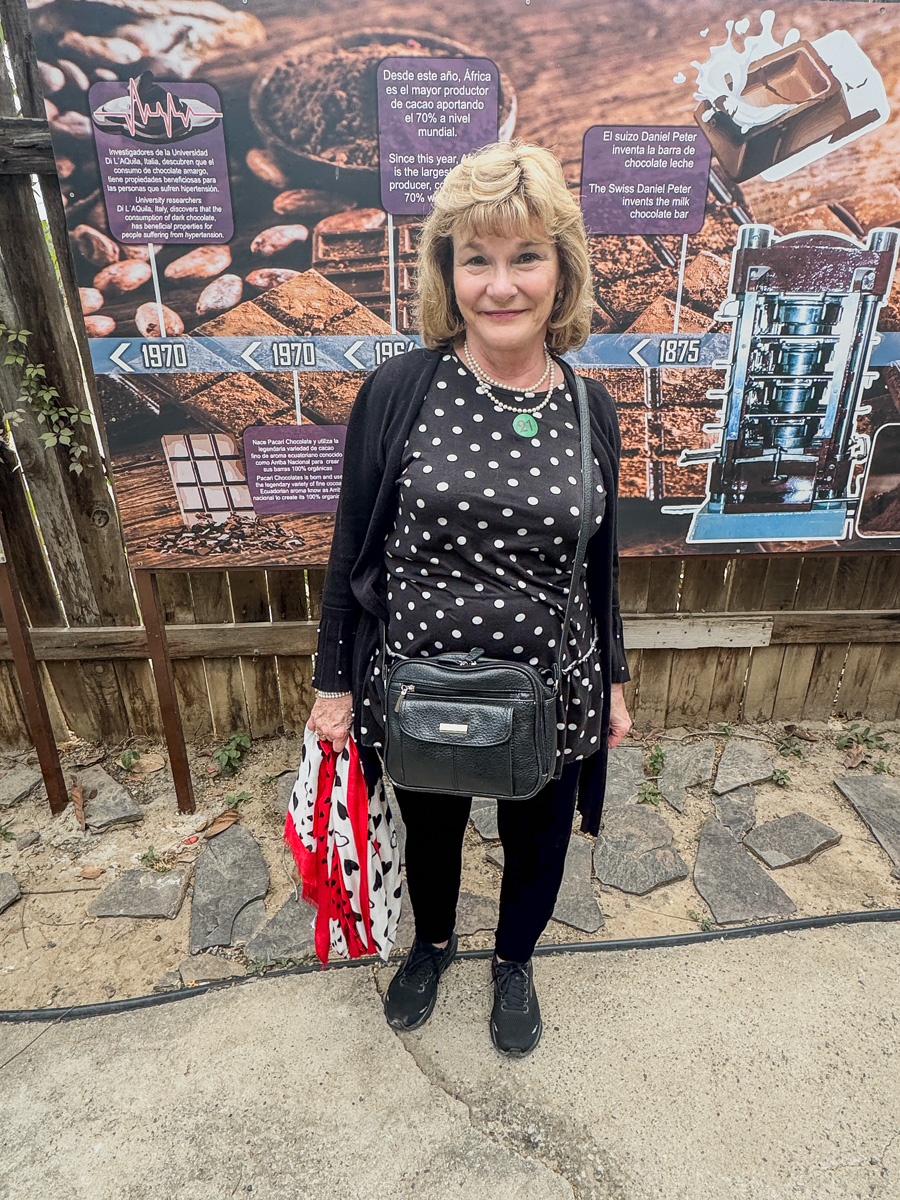
Mary studies it carefully!
Mary and I read every sign, and it was pretty interesting.
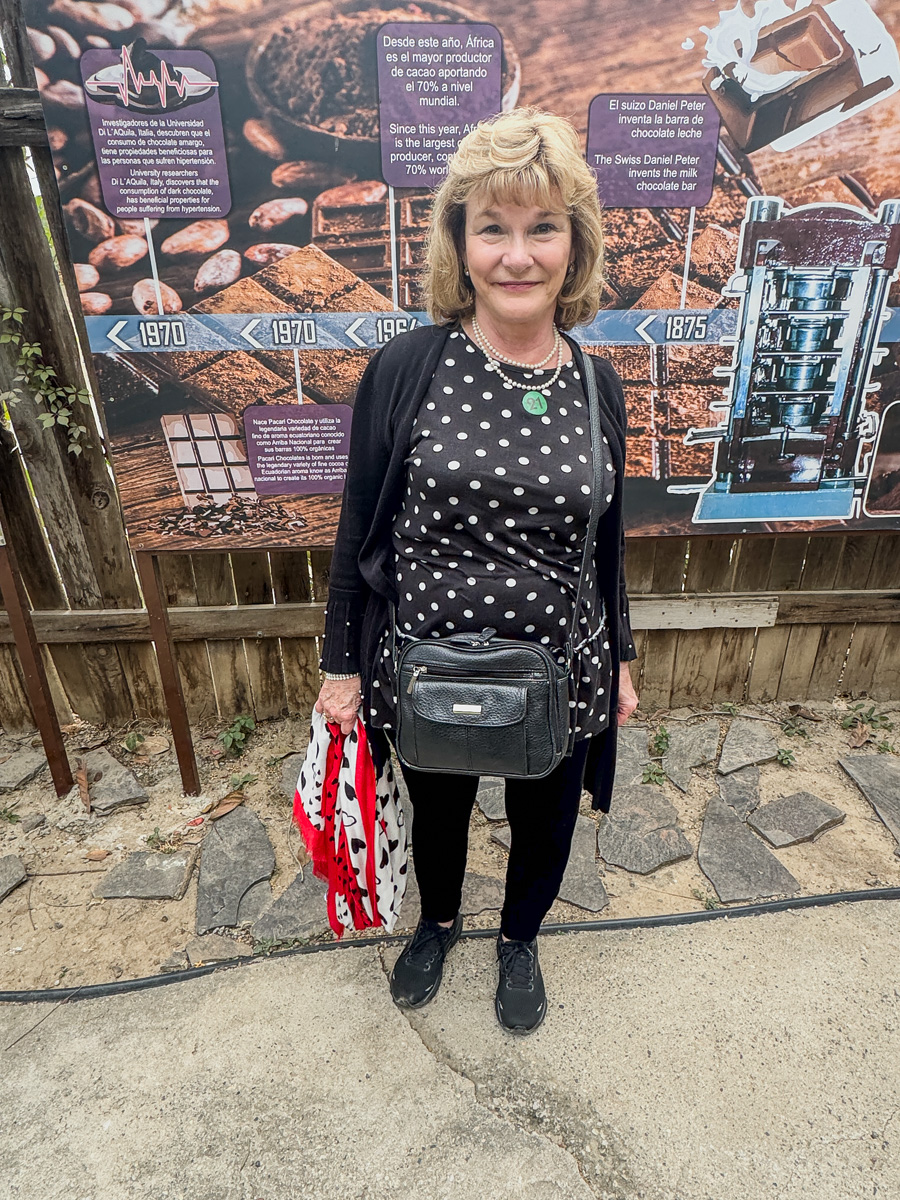
Everything was in Spanish and English.
The cacao pod is large and comes from the limbs of the tree. The tree lasts 50 years. Cacao trees grow in a limited geographical zone of about 20° to the north and south of the Equator. The cacao pod needs a lot of humidity to grow.
A typical pod contains 30 to 40 beans; about 400 dried beans are required to make one pound (450 g) of chocolate.
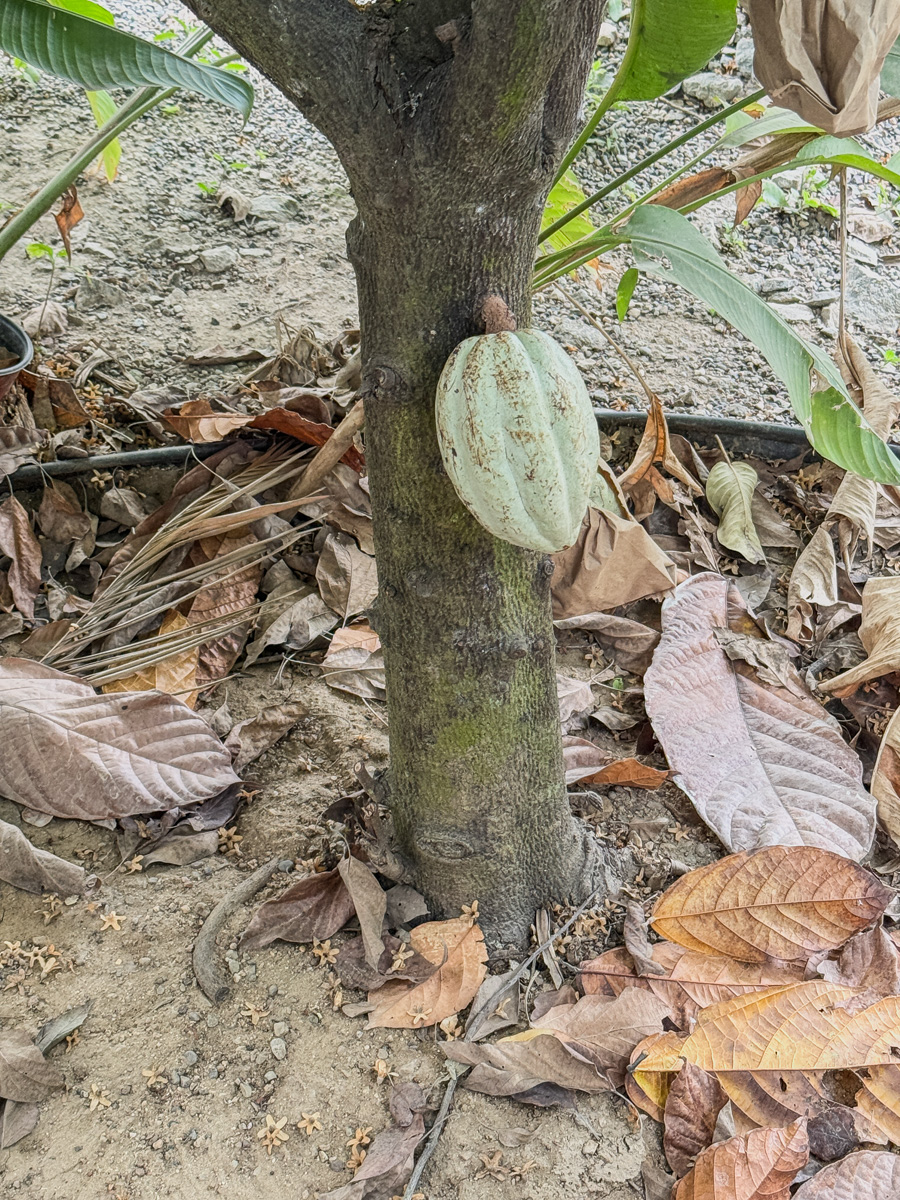
The cacao pods grow off the side of the limbs!

But we made a short stop at a honey making store first.

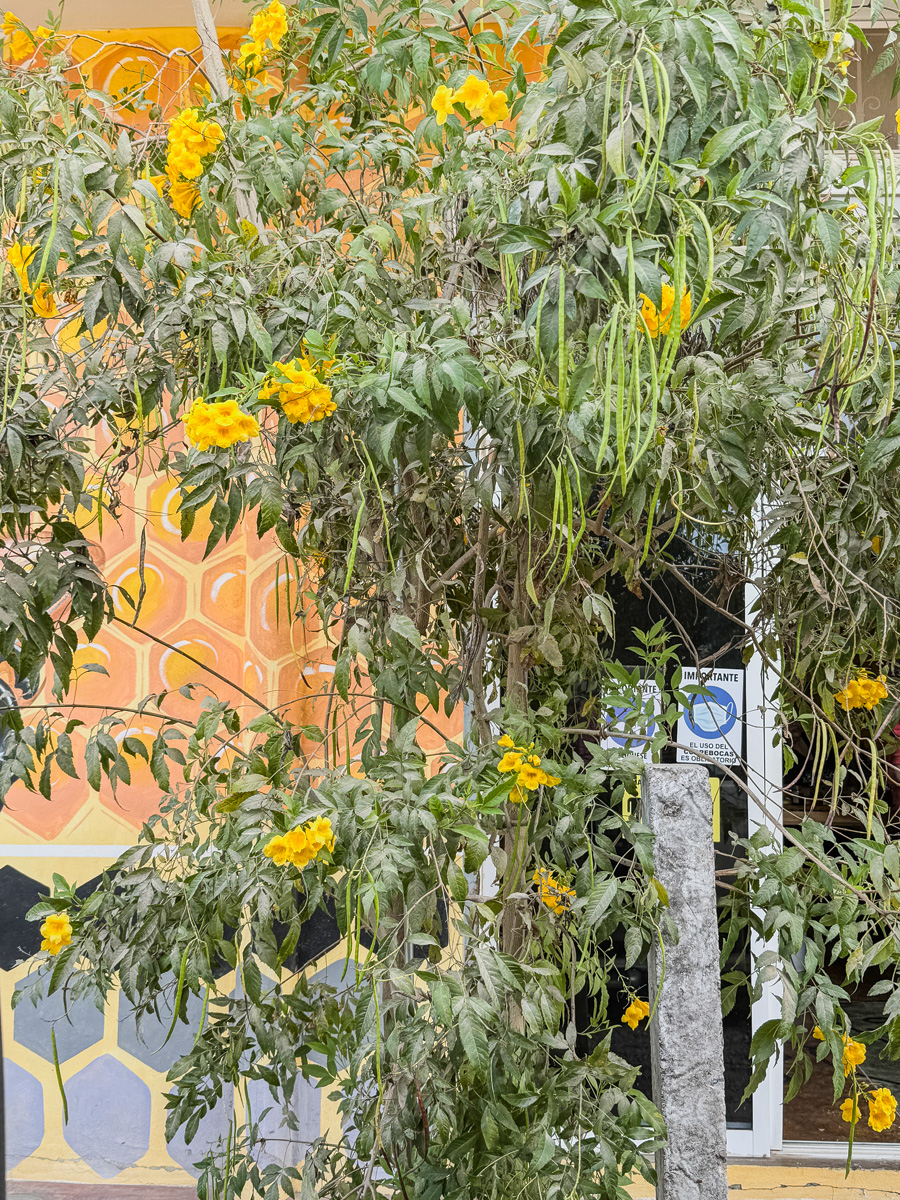
We jumped back on the bus and drove a few miles to a tortilla "factory." It was in the heart of a small town with dirt roads and stray dogs! Our tour guide lived in this town for a while and used to get the family's daily ration of tortillas from this store.
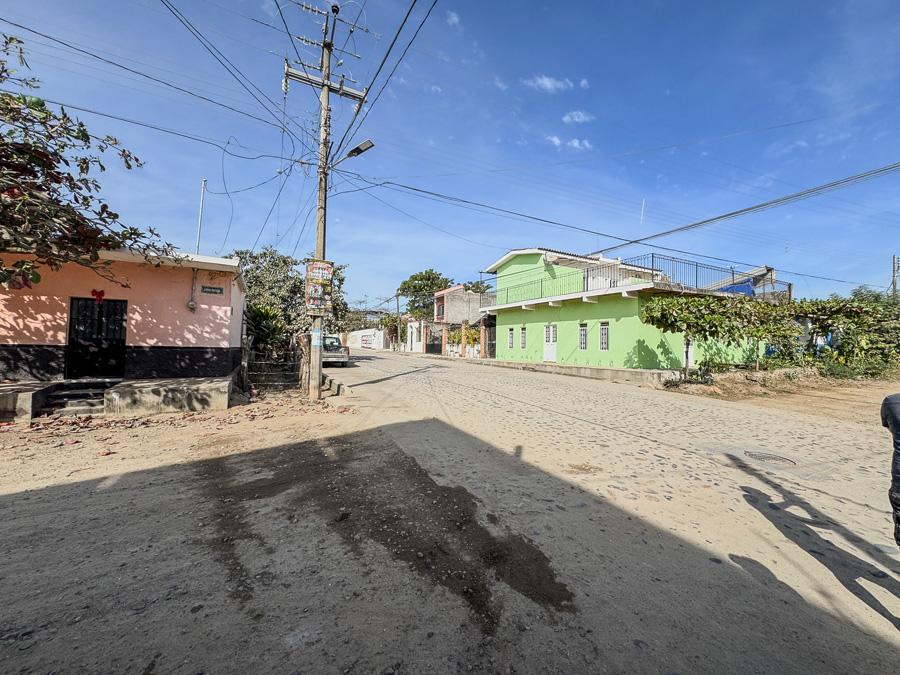
The homes were quite colorful!
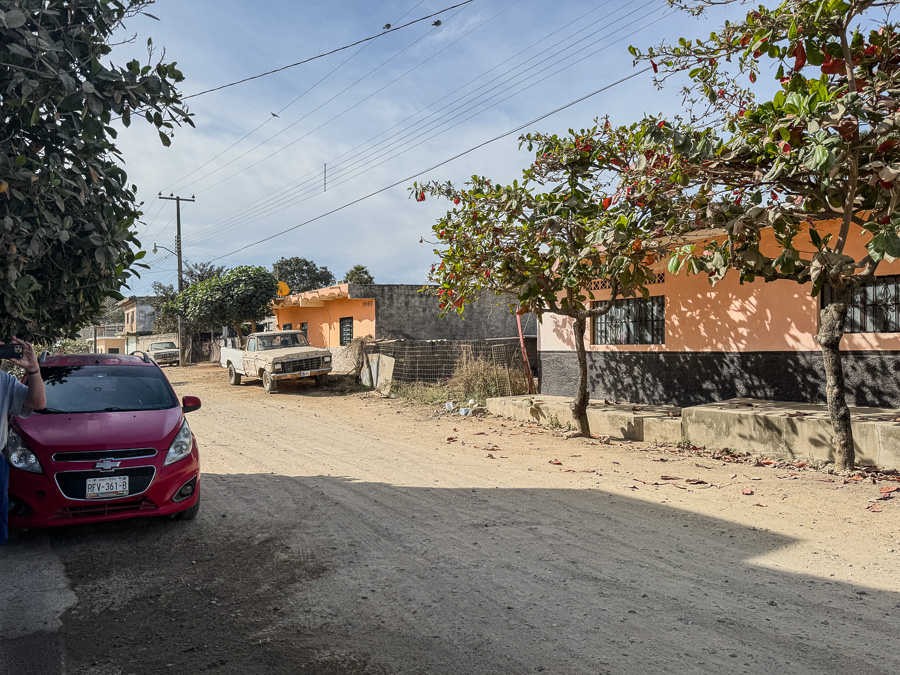
It was indeed a small town!
Evarardo Rodríguez Arce and Luis Romero invented the first tortilla machine in 1904. However, it was not popular because the tortillas were square. Fausto Celorio Mendoza is credited with inventing the first automatic round tortilla machine in 1947.
The shop opens early in the morning like a bakery and goes all day. The bags in the back contain corn.
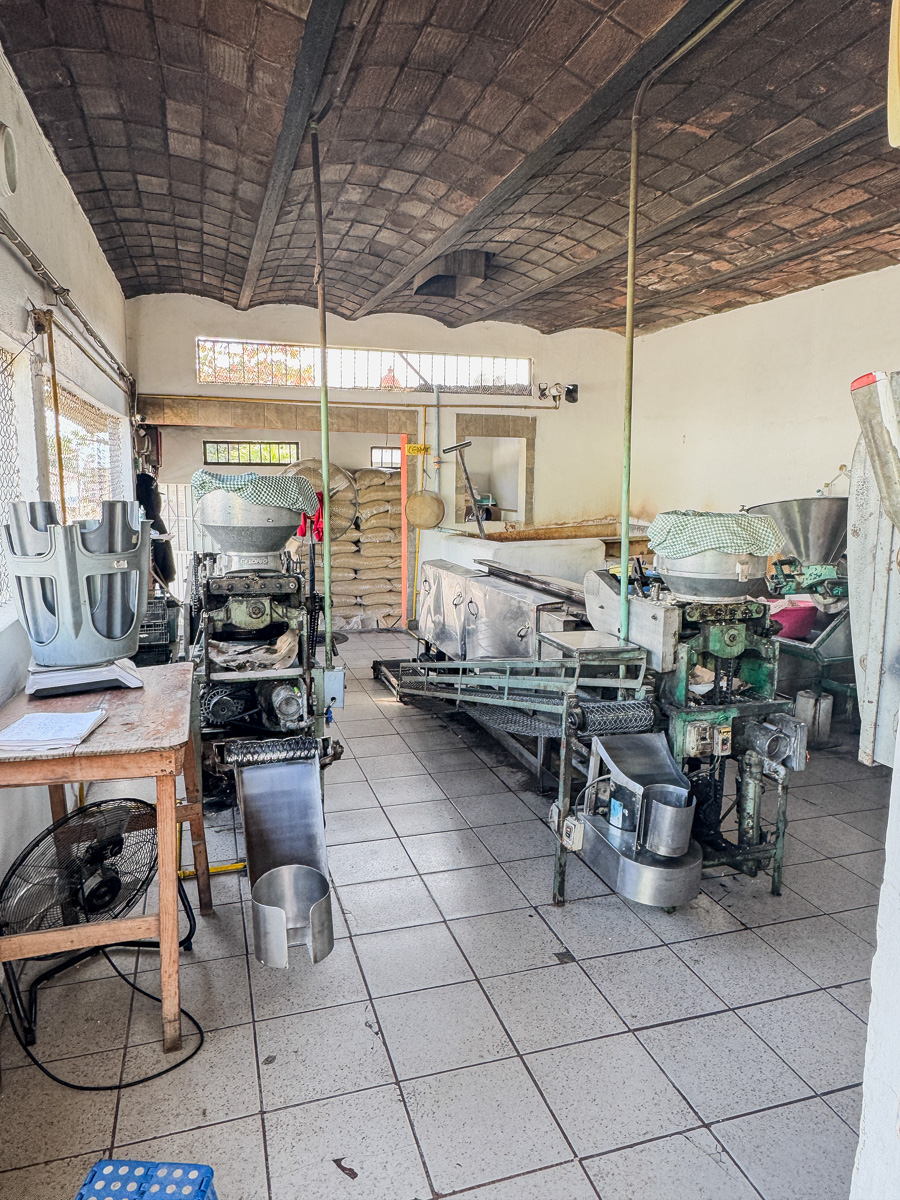
The "factory" was shut down for siesta!
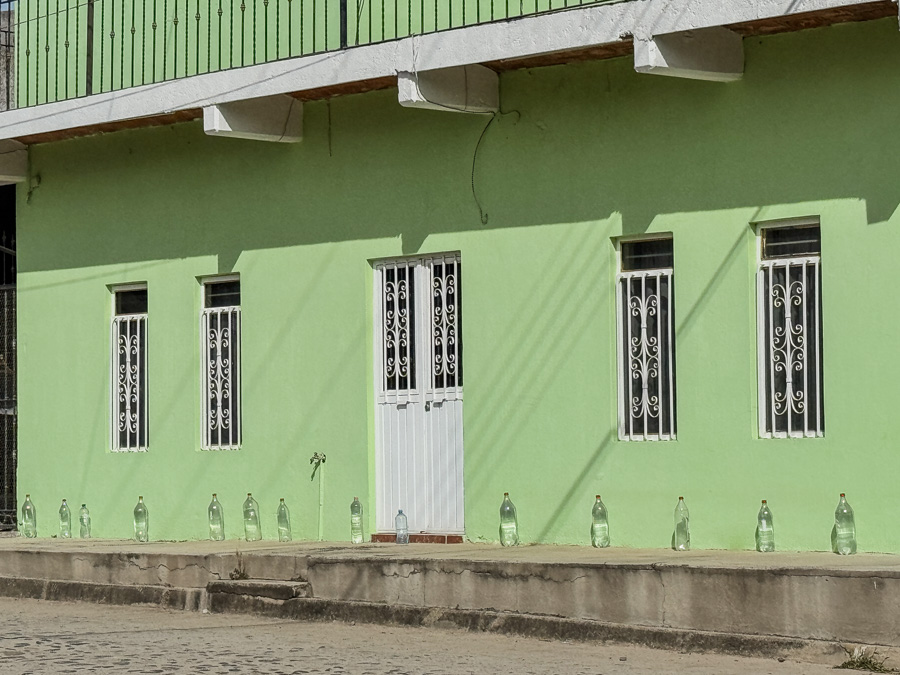
The story is the water bottles keep the dogs from peeing on the walls??
Next stop was a town square (they were making sure we were hungry) which had a large church. We went in and walked around.
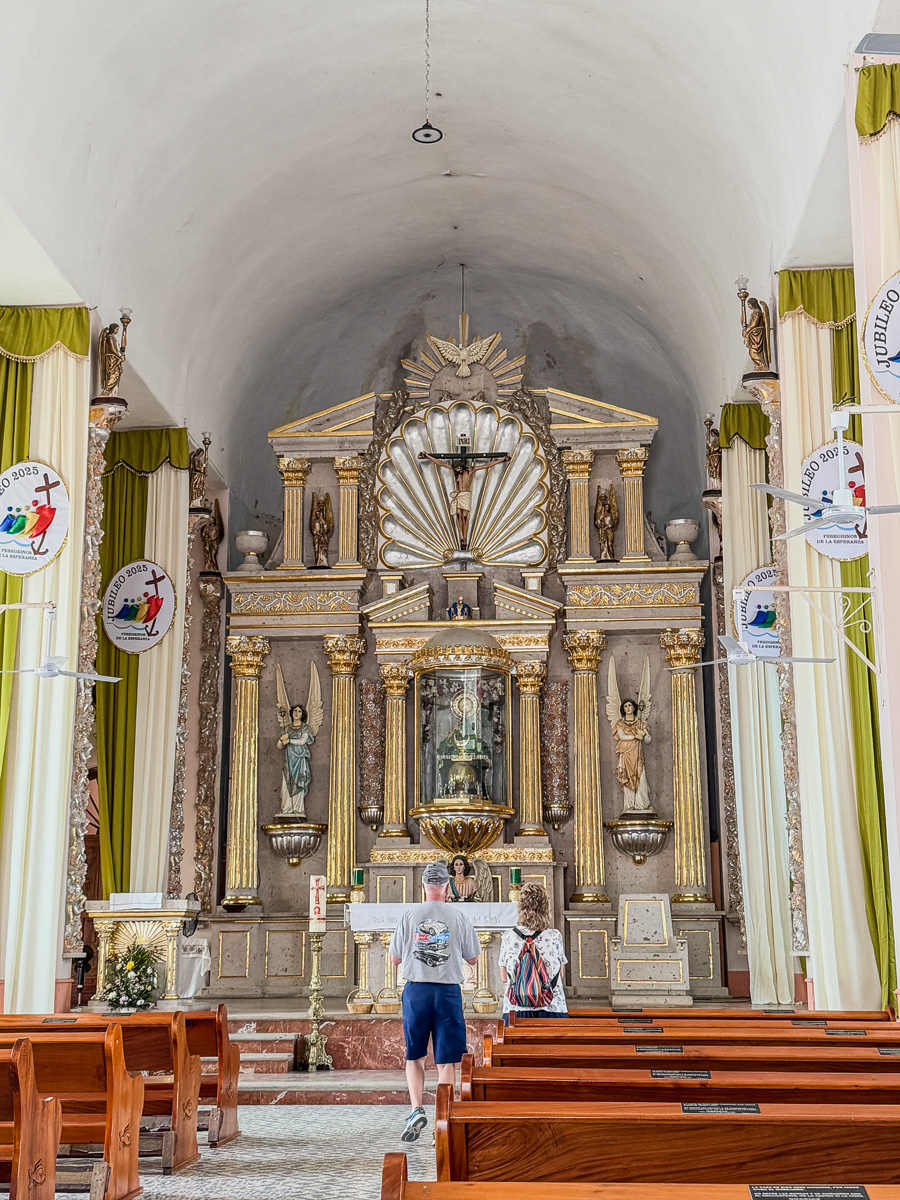
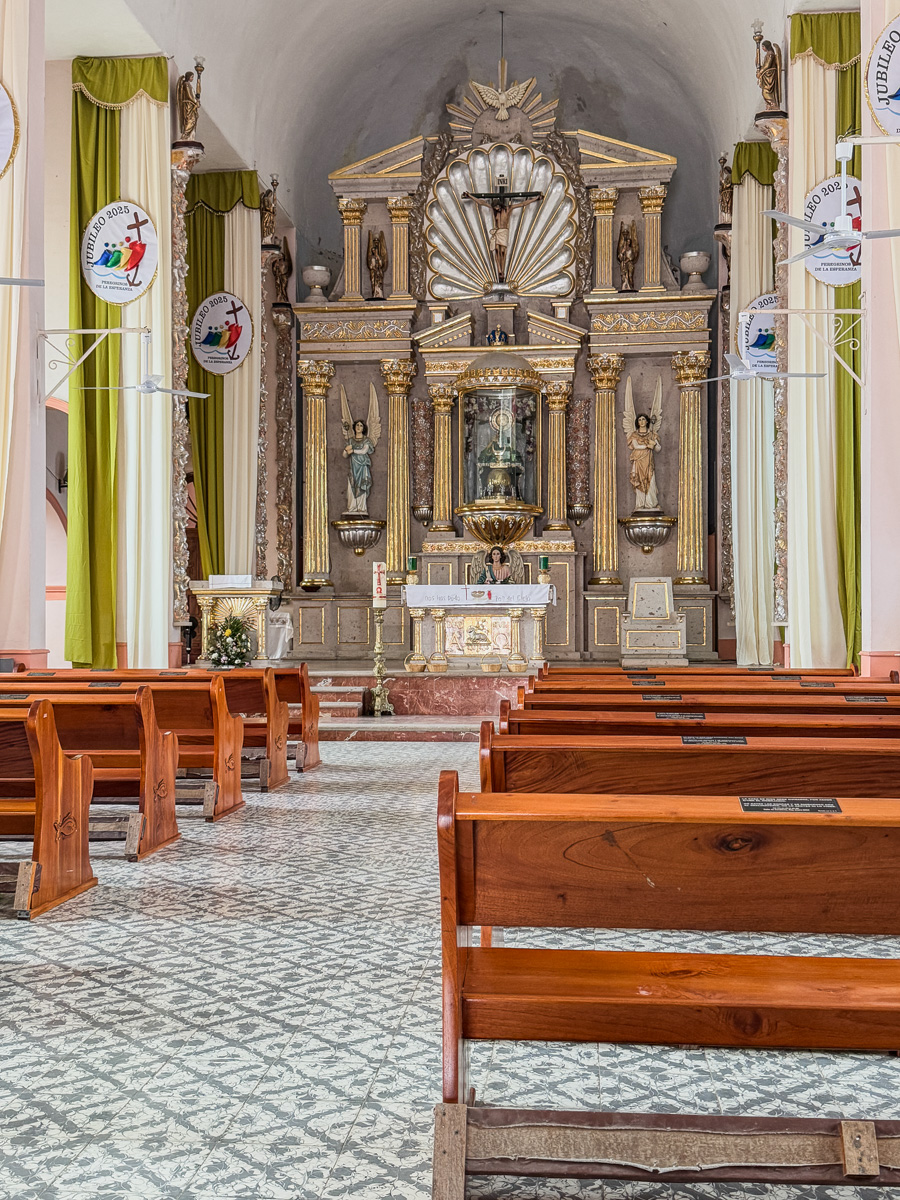
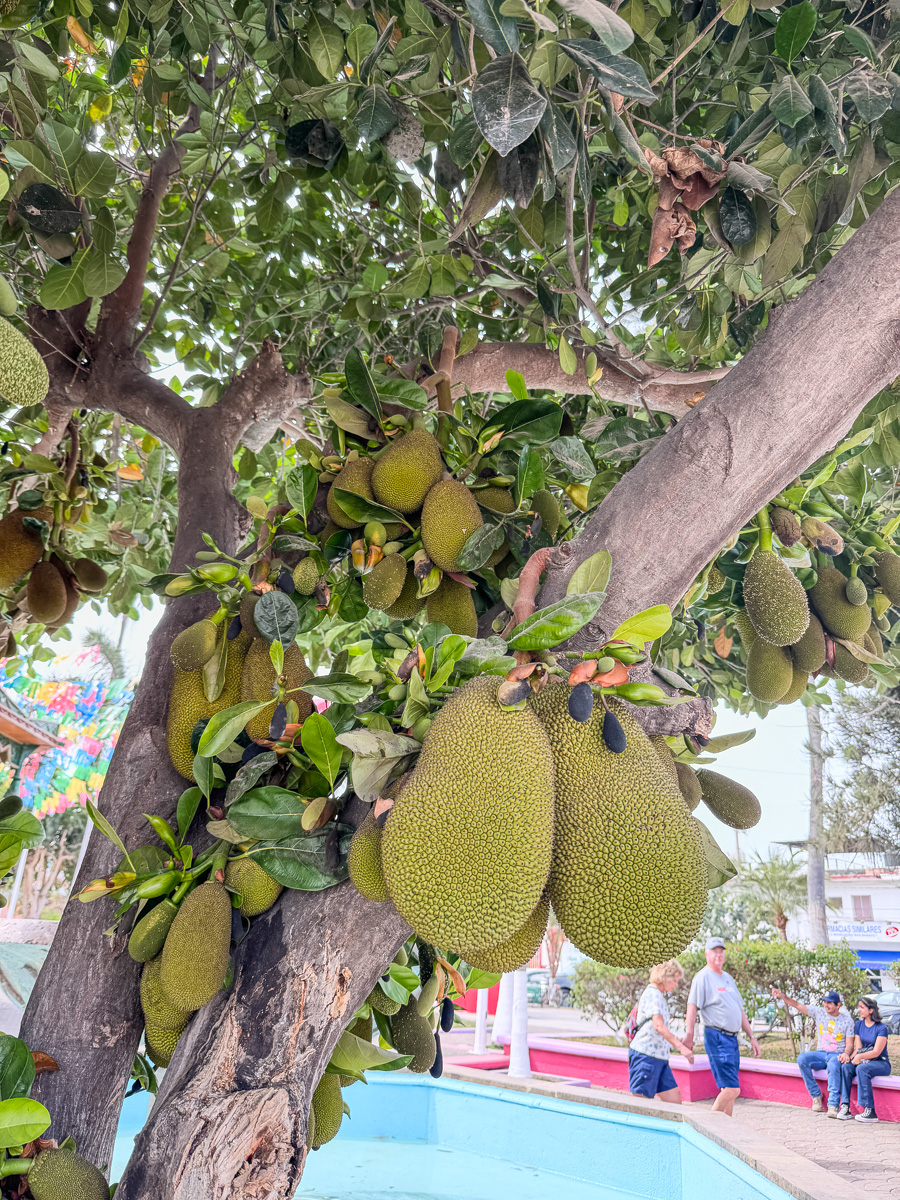
The Jackfruit grew wild everywhere!
Several jackfruit trees were in the plaza. Jackfruit is the largest fruit grown on a tree. A tree takes 5-7 years to produce fruit, and jackfruit trees produce 150- 200 fruits yearly. The fruit is picked in the summer and fall before it falls off the tree. Jackfruit is packed with essential vitamins and minerals you need for good health. It's an excellent source of B vitamins, potassium, and vitamin C.
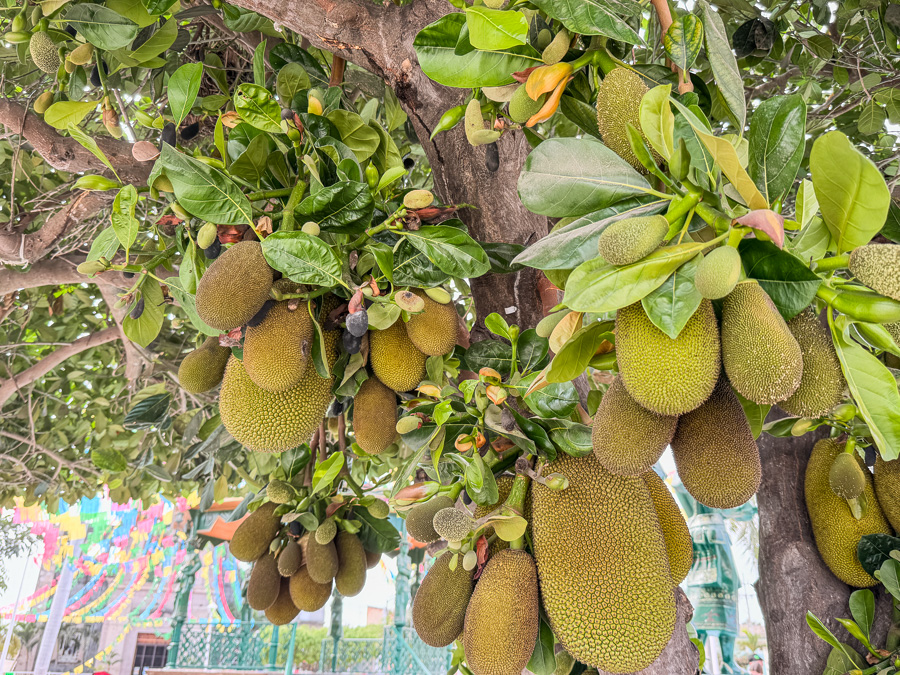
We bought some canned jackfruit last year and will now try it.
Did You Know? - The jackfruit (Artocarpus heterophyllus) is a species of tree in the fig, mulberry, and breadfruit family (Moraceae). The jackfruit is the largest tree fruit, reaching as much as 55 kg (120 pounds) in weight, 90 cm (35 inches) in length, and 50 cm (20 inches) in diameter. A mature jackfruit tree produces some 200 fruits per year, with older trees bearing up to 500 fruits in a year.
The jackfruit is a multiple fruit composed of hundreds to thousands of individual flowers, and the fleshy petals of the unripe fruit are eaten.
The jackfruit tree is well-suited to tropical lowlands and is widely cultivated throughout tropical regions of the world, including India, Bangladesh, Sri Lanka, and the rainforests of the Philippines, Indonesia, Malaysia, and Australia.
The ripe fruit is sweet (depending on variety) and is commonly used in desserts. Canned green jackfruit has a mild taste and meat-like texture that lends itself to being called "vegetable meat". Jackfruit is commonly used in South and Southeast Asian cuisines. Both ripe and unripe fruits are consumed. It is available internationally, canned or frozen, and in chilled meals, as are various products derived from the fruit, such as noodles and chips.
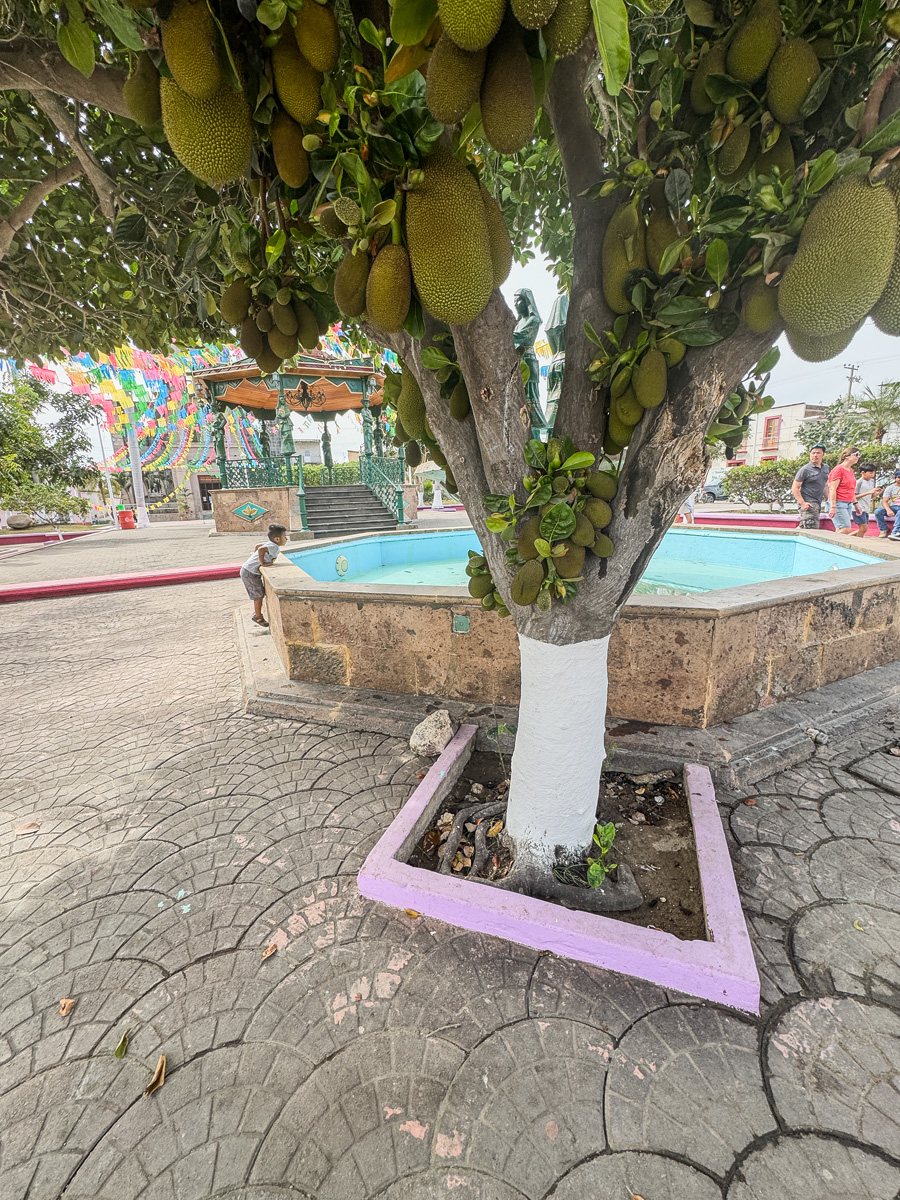
We saw several hundred pounds of fruit hanging for anyone to pick.

We are on our way to "The Ranch," which conjures up quite an image. It was not quite a ranch, but it is slowly becoming one.
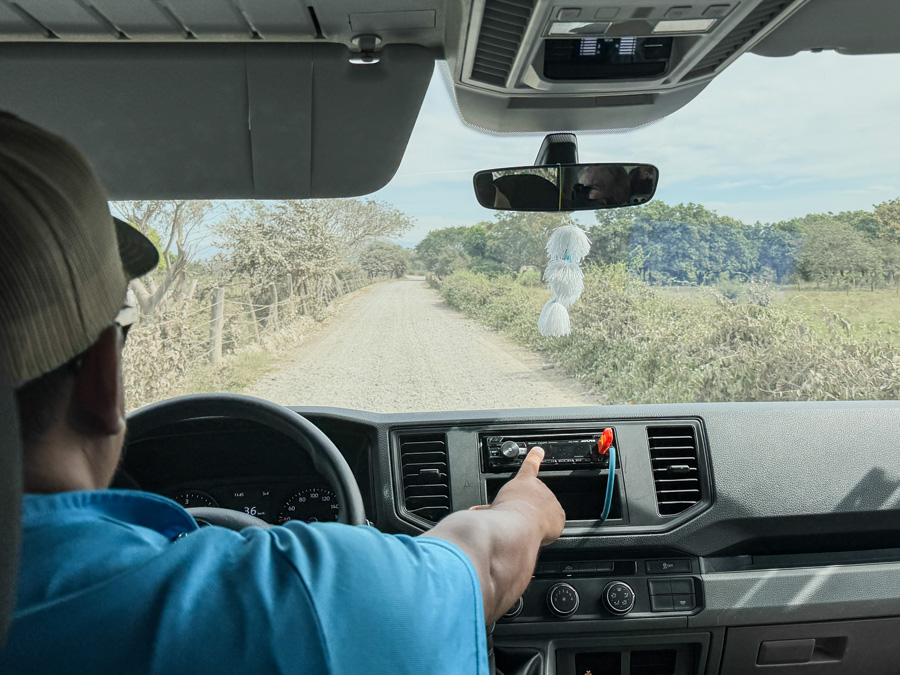
We were indeed out in the boonies!
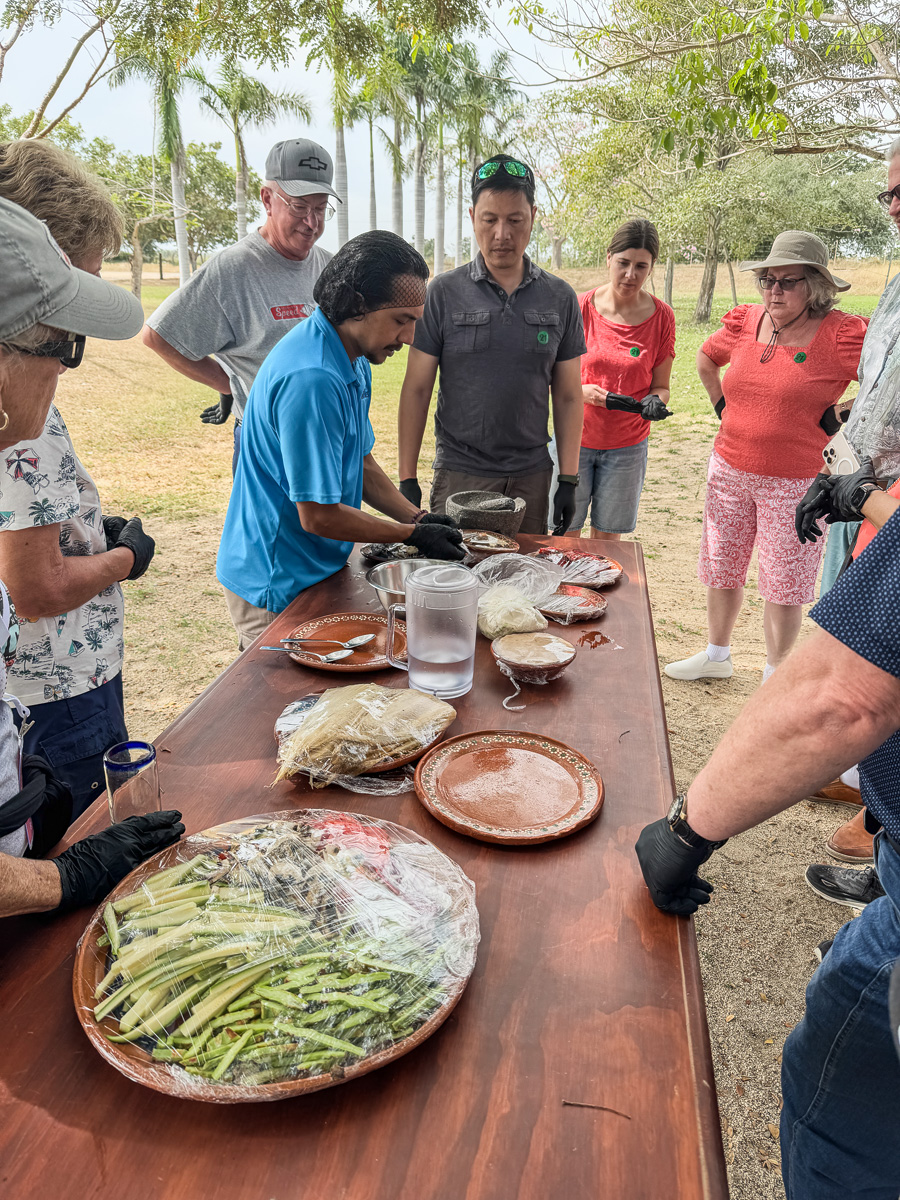
Our tour guide showed us how to make vegetable tamales.
Did You Know? - Traditional tamales are made with a corn masa dough surrounding a meat filling. Humitas are another kind of tamale made with fresh ground corn instead of masa. These garden vegetable tamales have the traditional masa dough, but the vegetarian filling is made with fresh corn, tomatoes, green onions, cilantro, and cheese. The smoky corn flavor of the masa dough contrasts nicely with the sweet fresh corn filling. Once you learn the basics of tamale making, you can fill them with anything from stewed or pulled meats and or other vegetables.
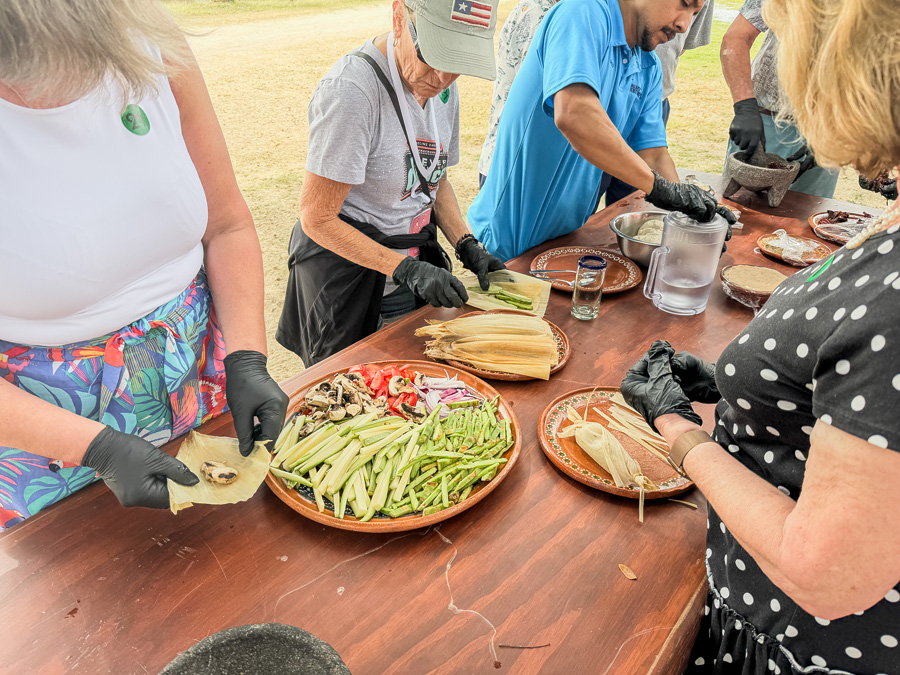
We hit the tables running (after a margarita). Mary used her surgical talents to tie off the ends of the tamales.
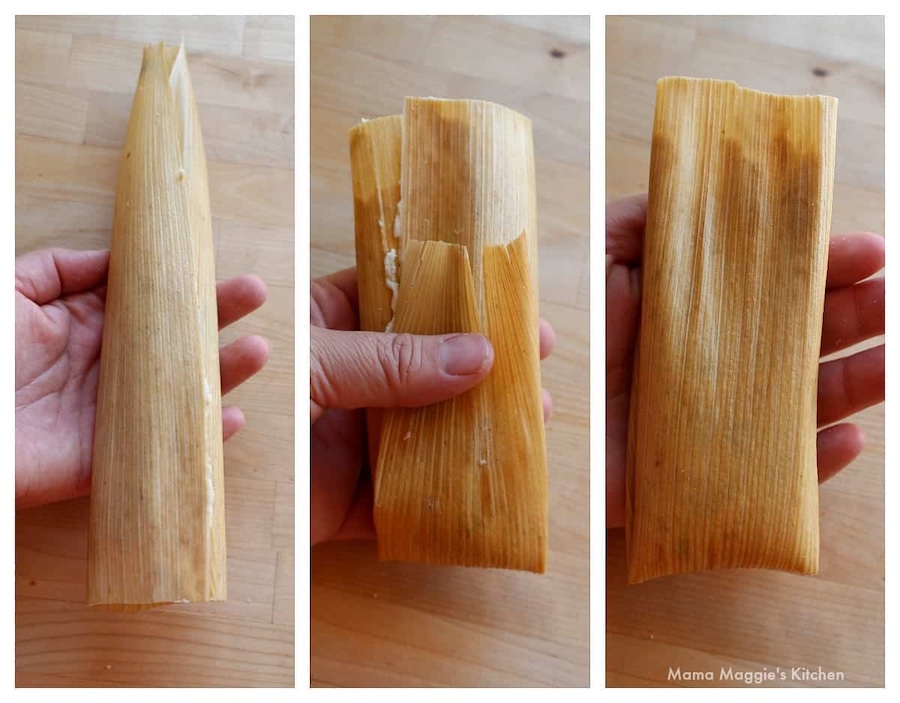
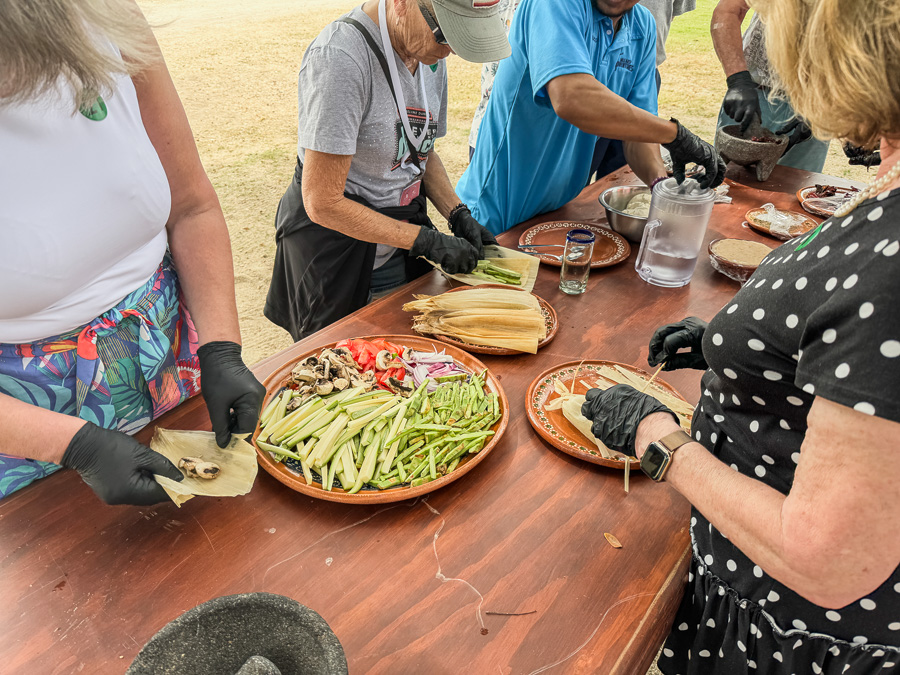
Mary was very quick and tied them all!
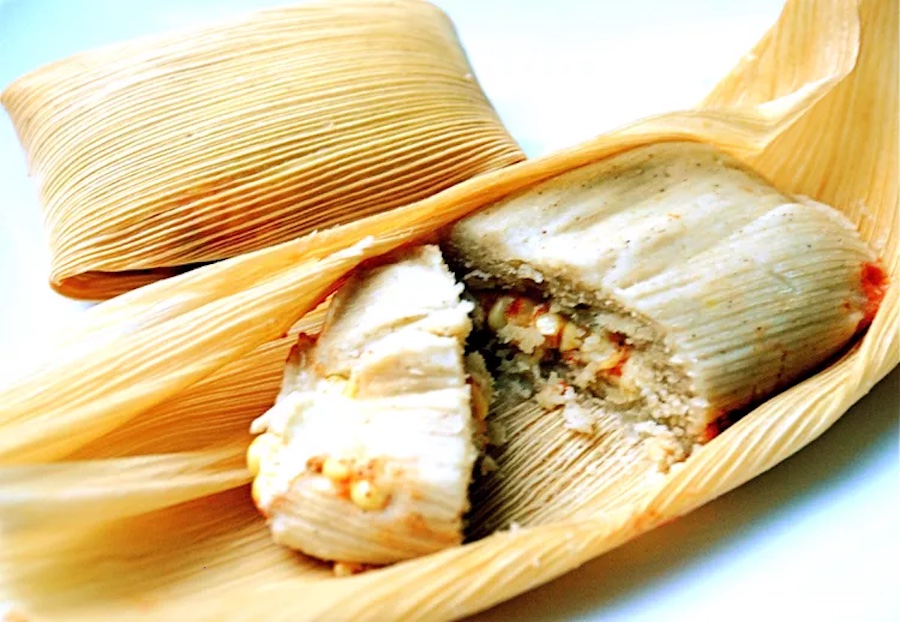
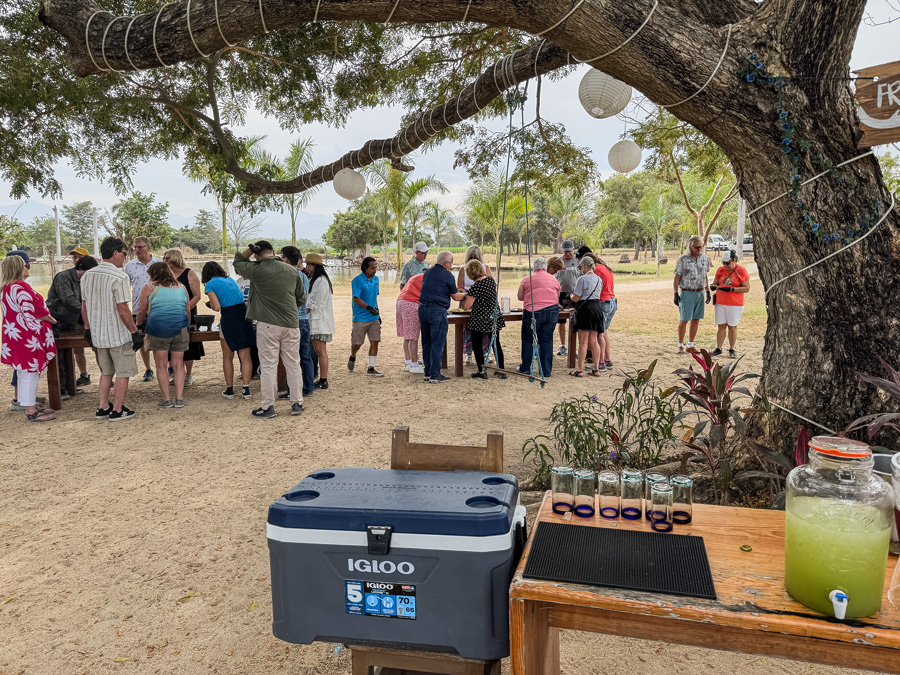
The cooler had packaged ice and the margarita's were flowing!
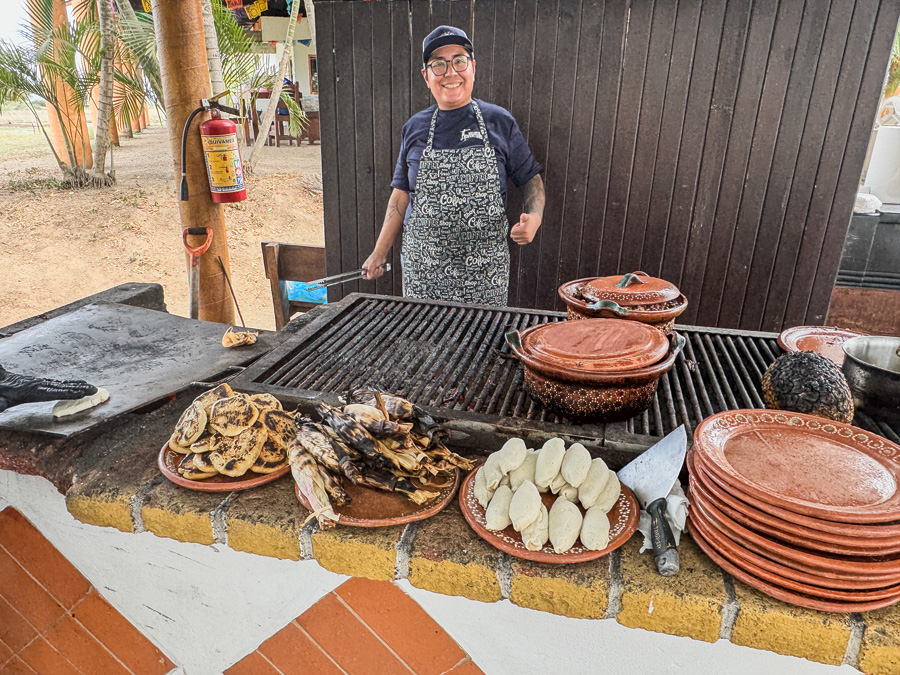
The chef did a super job!
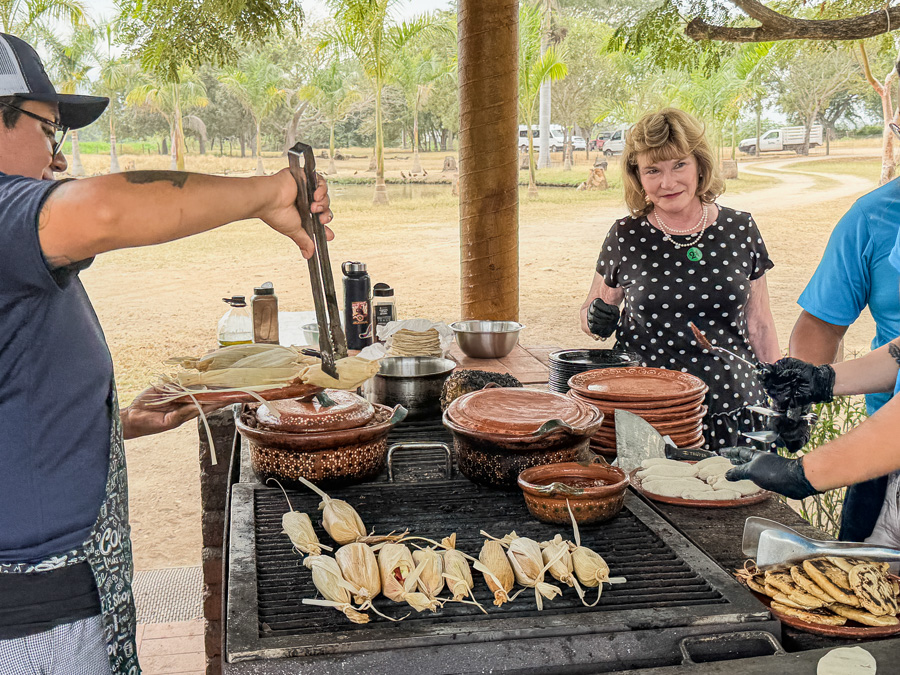
Step right up.
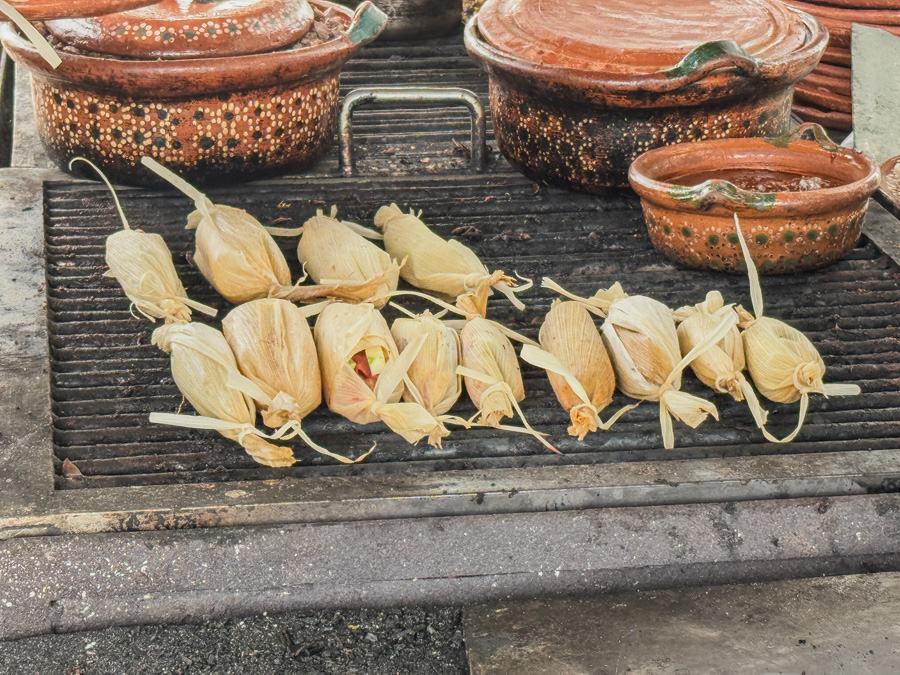
Look at those magnificent tie jobs! Thanks Dr. Mary
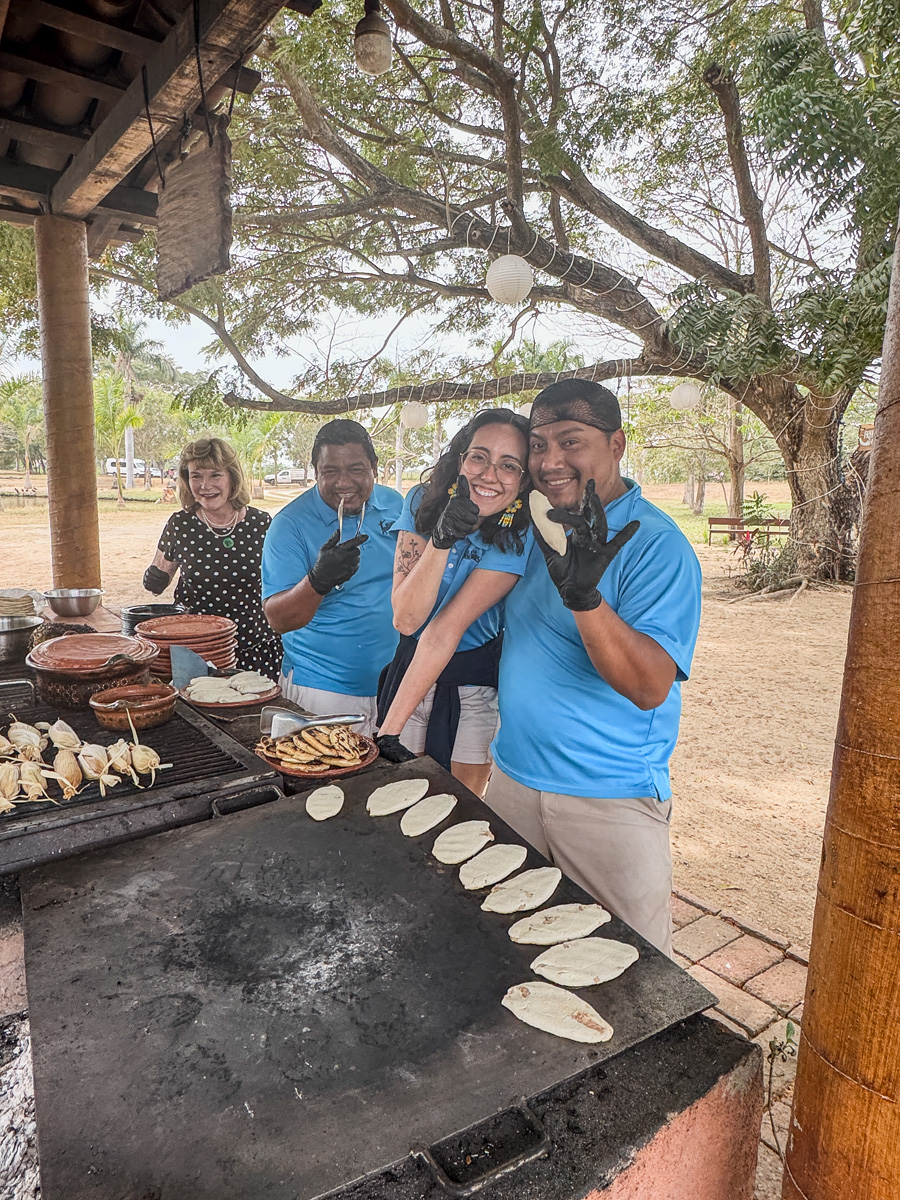
The staff were extremely friendly!
he vegetable tamales were grilled, and the chef cooked chicken and beef. The smells were terrific: rub-a-dub-dub, bring on the grub!

Oh boy... It is time to eat!!
Grilling caramelizes the sugars, intensifying its sweetness and adding a smoky flavor. The heat also softens the fruit, making it juicy and tender.
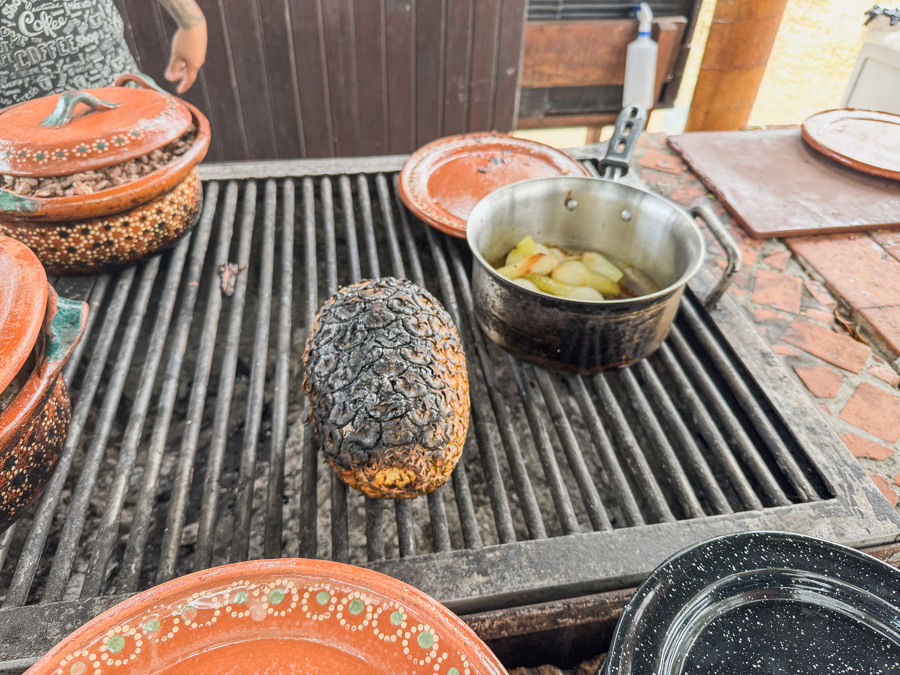
The pineapple was amazing.
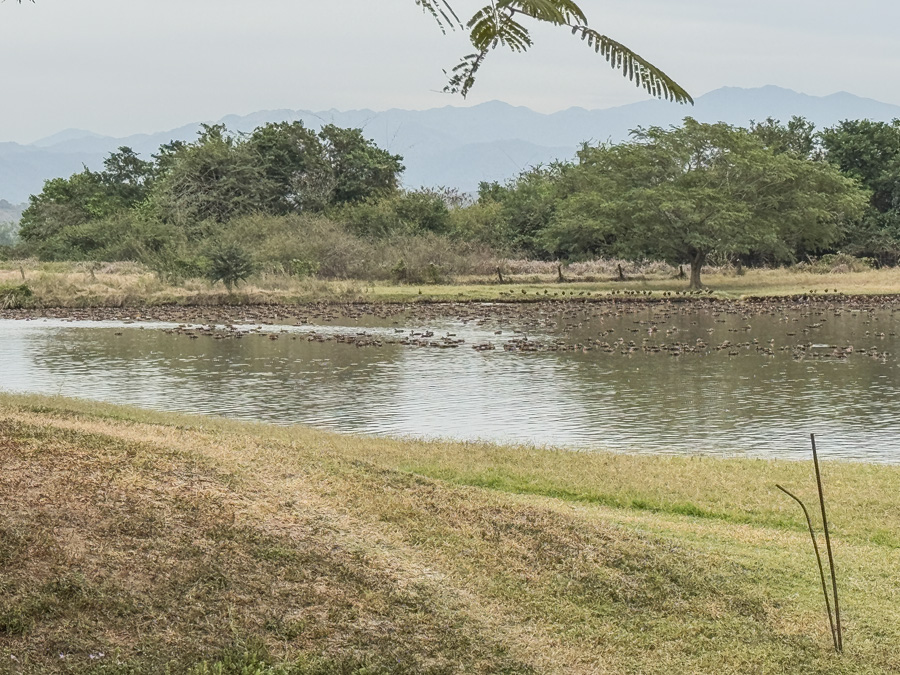
The ducks were making quite a racket!
We returned to the ship and went to the Suite Lounge, where we had Indian chicken and cold cuts. There, we watched as Mazatlan disappeared.

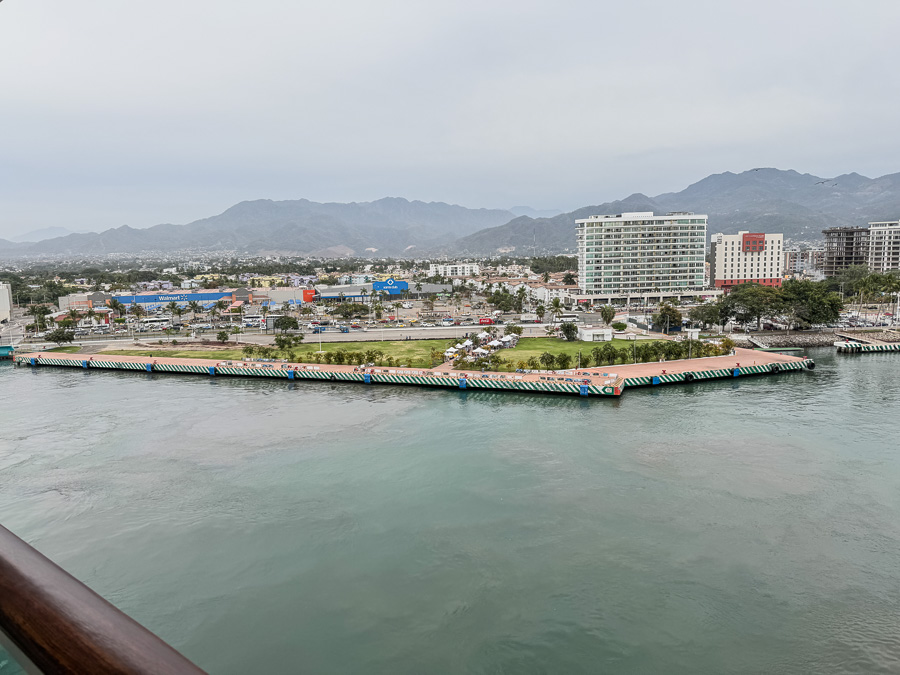
The city seemed quite modern and up to date!

We headed out to sea!

Mary decided we needed to go to the shows tonight, so we headed to Studio B for the ice skating show! The drone display wowed us; watch the movie, and you will see almost 100 drones dancing over the ice.
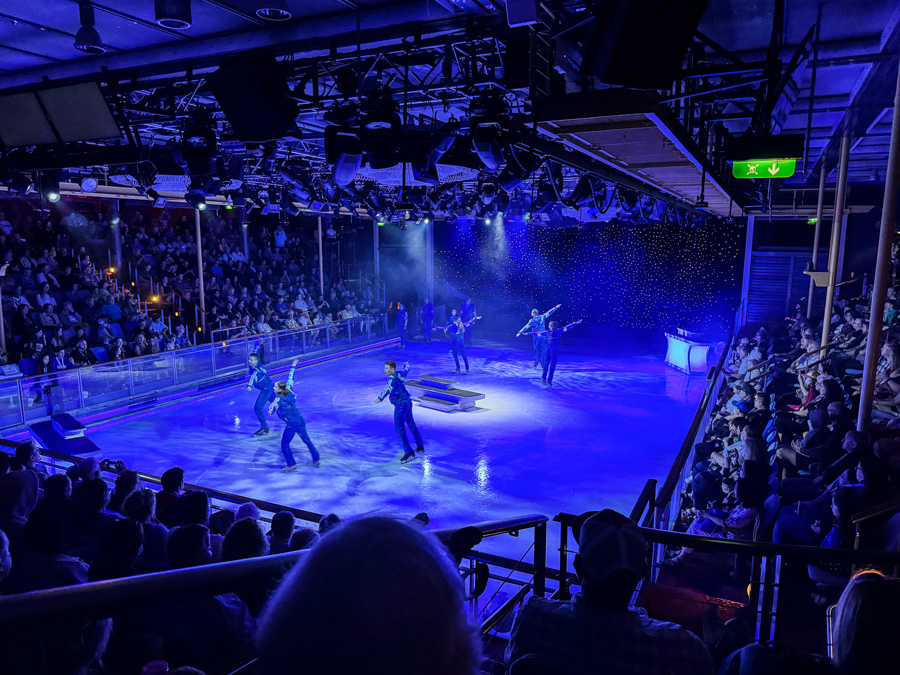
Spectacular!
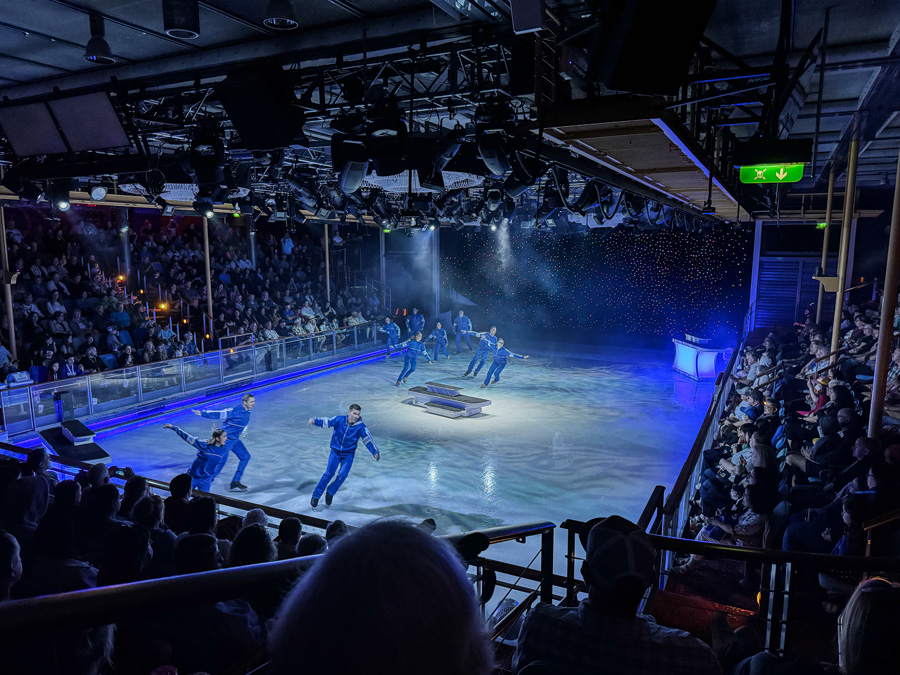
The show continues after the drones depart!
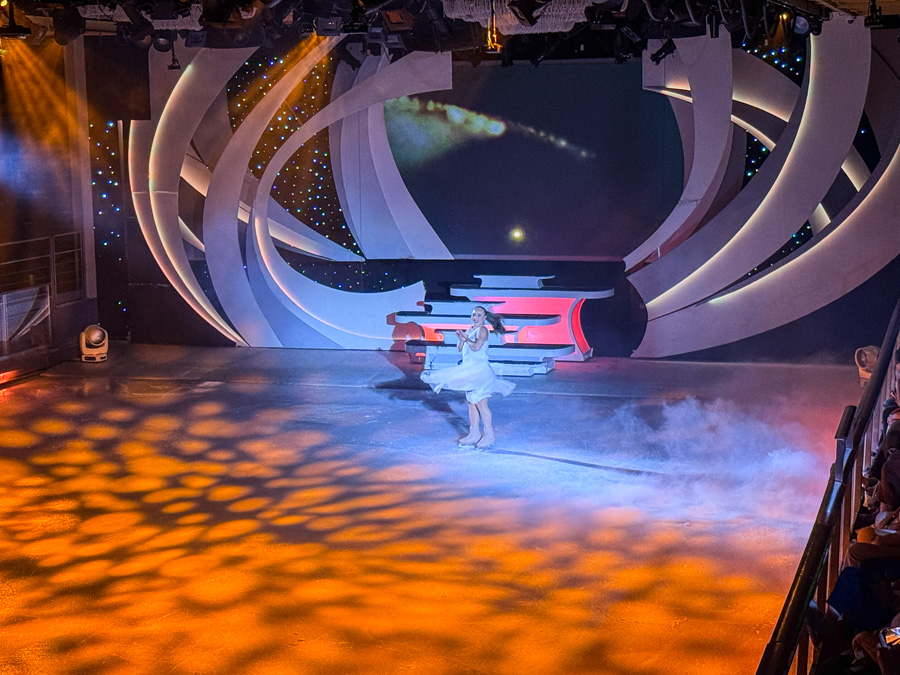
The video backdrops gave the show a feeling of being in a large venue!
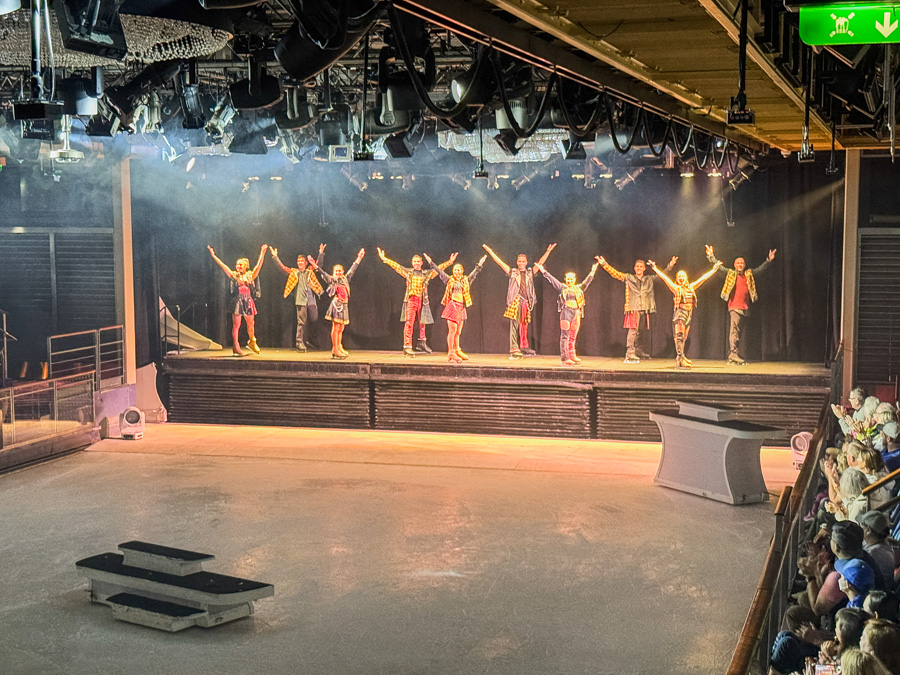
All those people on the ice at once! Wow!

We walked quickly to the main theater from the ice skating event and watched the juggling act. We were in the second row, and it was so funny that I almost spilled my wine.
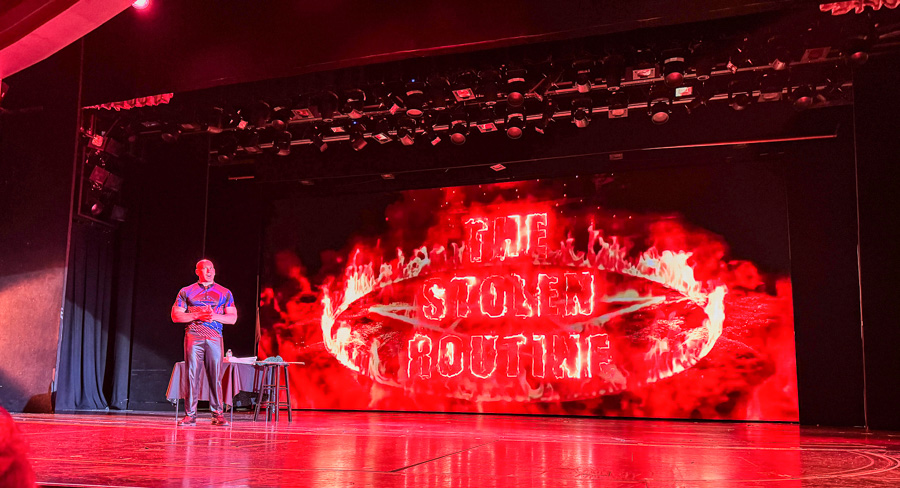
Juggling and magic and a load of fun!

We were more interested in dancing than drinking; one or to glasses of wine and we are done!
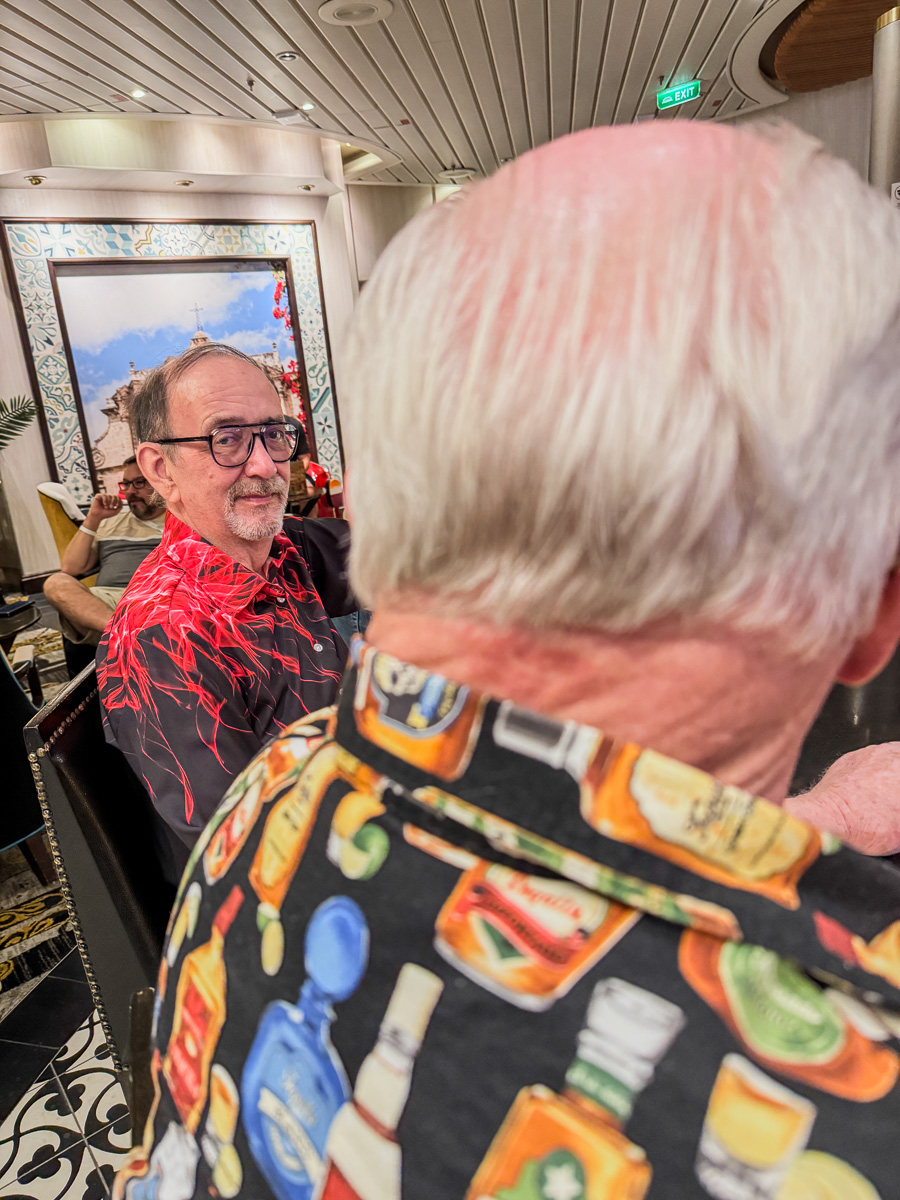
Ken was there in another magnificent shirt!
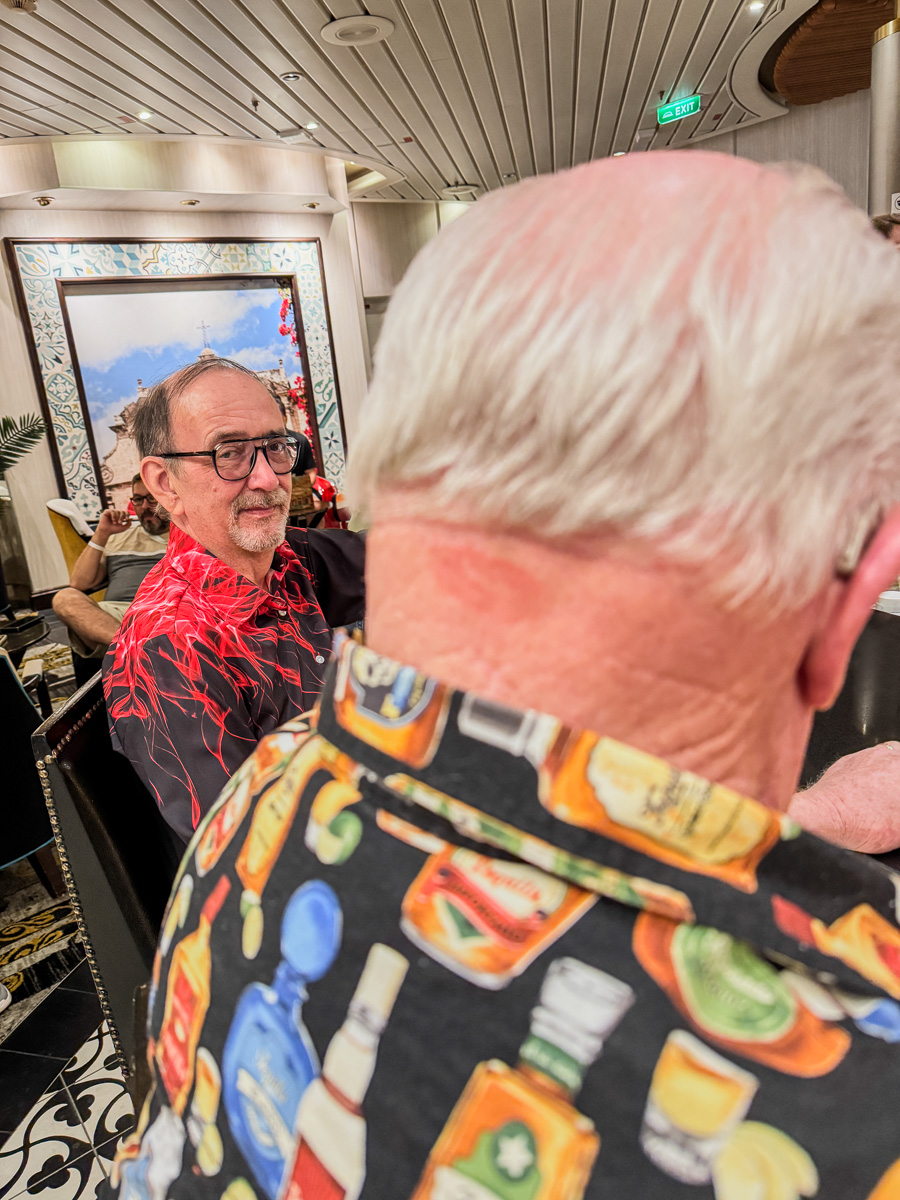
I got a kiss on the back of the neck; who was that masked lady???
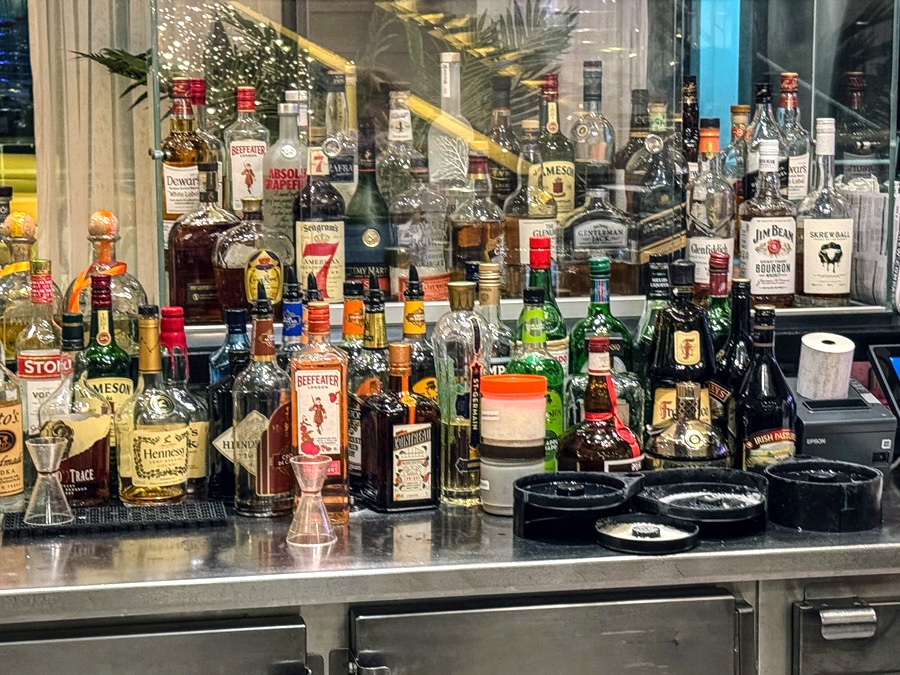
Tonight we will NOT have one of each!!


Proceed To Day Six - Cruising Up The Baja California Coast!!